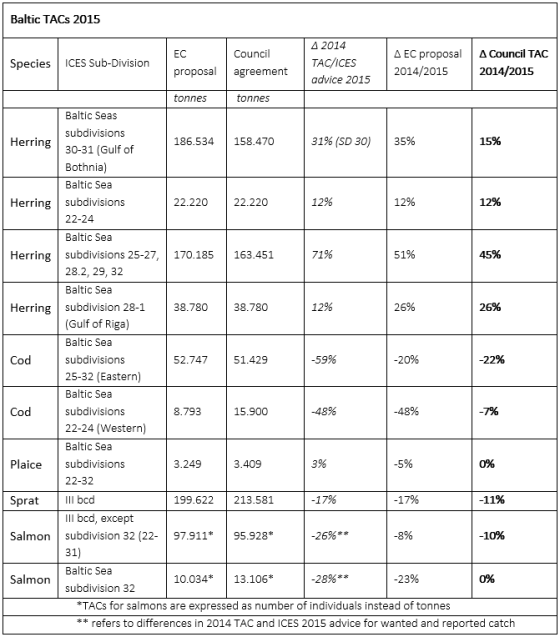Baltic Sea, as the first region to implement the rationalized requirements of the new CFP, has by many been considered as a role model for the implementation of the Common Fisheries Policy. Yesterday, these expectations were sadly not fulfilled when the Council decided for fishing opportunities in the Baltic Sea for 2015.
The CFP objective of setting fishing mortality (F) levels at or below Maximum Sustainable Yield (MSY) was only partly adhered to. FMSY were only decided for four out of ten Baltic stocks (all herring stocks) even though the scientific advice provided by the International Council for Exploitation of the Sea (ICES) was overall more precautionary and identified several more stocks to be managed in accordance with the MSY principle.
The Council agreed that two more stocks would be managed at FMSY by 2016 which is a modest ambition and not in line with CFP since exemptions from meeting the FMSY target by 2015 is only valid for stocks when it “would seriously jeopardize the social and economic sustainability of the fleets involved” – and in the Baltic case it difficult to see how this would be justified. As an example it is hard to see how a 17% reduction in landings of sprat, as advised by ICES, would jeopardize the whole industry. In the meeting it was also decided that a new “banking” system is to be introduced to facilitate fishermen with a more flexible quota utilization between consecutive years due to the Russian import ban of European fishery products. The consequences of such a system might be questioned if quotas are set on too high levels as there might be a danger that large quantities would be caught even though the market demand is low, resulting in decreased prices.
It I also very unfortunate that the Council did not choose to meet MSY objectives for the western Baltic cod stock even though the fishing mortality on the stock has been overfished for years. Furthermore, due to the poor condition and low individual growth of eastern Baltic cod, a reduction of F for that stock in line with the scientific advice would have been needed.
Finally, in the last night’s press-release, Commissioner Damanaki stated that she considered the more regionalized process to be successful although the outcome was less ambitious than desired by the Commission. This remark might raise the question whether the Council finds it acceptable not to adhere to the objectives and timelines set in the CFP as long as decisions are based on regional agreements?
Below is a table with total allowable catches (TACs) in the Baltic Sea for 2015, including the ICES advice and EC proposals (n.b. SD 30 &31 herring stocks are merged and so are SD 21-23 & 24-31 plaice stocks).
